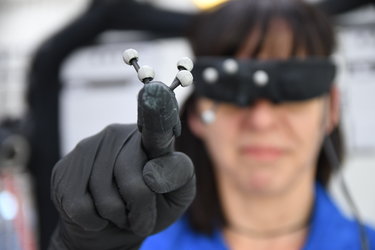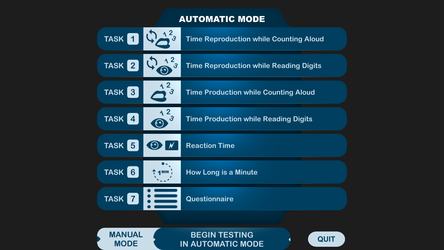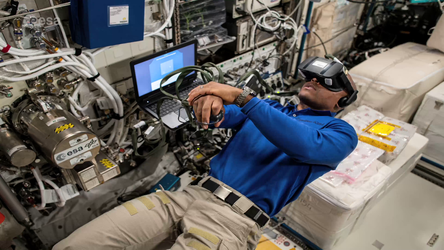Accept all cookies Accept only essential cookies See our Cookie Notice

About ESA
The European Space Agency (ESA) is Europe’s gateway to space. Its mission is to shape the development of Europe’s space capability and ensure that investment in space continues to deliver benefits to the citizens of Europe and the world.
Highlights
ESA - United space in Europe
This is ESA ESA facts Member States & Cooperating States Funding Director General Top management For Member State Delegations European vision European Space Policy ESA & EU Space Councils Responsibility & Sustainability Annual Report Calendar of meetings Corporate newsEstablishments & sites
ESA Headquarters ESA ESTEC ESA ESOC ESA ESRIN ESA EAC ESA ESAC Europe's Spaceport ESA ESEC ESA ECSAT Brussels Office Washington OfficeWorking with ESA
Business with ESA ESA Commercialisation Gateway Law at ESA Careers Cyber resilience at ESA IT at ESA Newsroom Partnerships Merchandising Licence Education Open Space Innovation Platform Integrity and Reporting Administrative Tribunal Health and SafetyMore about ESA
History ESA Historical Archives Exhibitions Publications Art & Culture ESA Merchandise Kids Diversity ESA Brand Centre ESA ChampionsLatest
Space in Member States
Find out more about space activities in our 23 Member States, and understand how ESA works together with their national agencies, institutions and organisations.
Science & Exploration
Exploring our Solar System and unlocking the secrets of the Universe
Go to topicAstronauts
Missions
Juice Euclid Webb Solar Orbiter BepiColombo Gaia ExoMars Cheops Exoplanet missions More missionsActivities
International Space Station Orion service module Gateway Concordia Caves & Pangaea BenefitsLatest
Space Safety
Protecting life and infrastructure on Earth and in orbit
Go to topicAsteroids
Asteroids and Planetary Defence Asteroid danger explained Flyeye telescope: asteroid detection Hera mission: asteroid deflection Near-Earth Object Coordination CentreSpace junk
About space debris Space debris by the numbers Space Environment Report In space refuelling, refurbishing and removingSafety from space
Clean Space ecodesign Zero Debris Technologies Space for Earth Supporting Sustainable DevelopmentApplications
Using space to benefit citizens and meet future challenges on Earth
Go to topicObserving the Earth
Observing the Earth Future EO Copernicus Meteorology Space for our climate Satellite missionsCommercialisation
ESA Commercialisation Gateway Open Space Innovation Platform Business Incubation ESA Space SolutionsLatest
Enabling & Support
Making space accessible and developing the technologies for the future
Go to topicBuilding missions
Space Engineering and Technology Test centre Laboratories Concurrent Design Facility Preparing for the future Shaping the Future Discovery and Preparation Advanced Concepts TeamSpace transportation
Space Transportation Ariane Vega Space Rider Future space transportation Boost! Europe's Spaceport Launches from Europe's Spaceport from 2012Latest

Weightless in virtual reality
Thank you for liking
You have already liked this page, you can only like it once!
Test subjects in a parabolic flight conducting "The Influence of Gravity on the Perception of Self-Motion SMUG (Self-Motion Under Gravity)" experiment. It was a difficult campaign to organise, but the scientific results are some of the best ever. In November 2020 over 60 researchers run 11 experiments in an Airbus aircraft with no less than three pilots. This was no ordinary flight: the A310 'Air Zero G' flew in parabolic arcs, repeatedly free-falling 600m up and back down again, providing weightlessness for all passengers and their experiments, 20 seconds at a time.
With flights prepared and operated by contractor Novespace, ESA runs regular parabolic campaigns to conduct scientific research and to test hardware for future space missions.
ESA's 73rd parabolic flight campaign was relocated to Padeborn-Lippstadt airport in Germany to minimise risk of COVID-19 infection.
As in all human spaceflight, safety is paramount and many measures were taken to ensure COVID-19 was kept at bay. All participants were tested before leaving high-risk areas, temperatures were checked regularly, strict social distancing was in place in the hangar where experiments were prepared, masks were obligatory at all times, only a limited number of experimenters were allowed on the aircraft, and the plane’s seating arrangement was changed to ensure social distancing.
The diverse experiments focused on how humans perceive motion without gravity as reference, how our brains manage to process information during weightlessness, new ways of extracting oxygen from lunar soil, techniques for better cooling and heat transfer in space, and zero-g 3D-printing.
The experiment shown here investigates how humans generate a perception of their motion by integrating a range of different cues. Vision and vestibular cues are particularly important in this process. Humans have evolved and adapted to an environment where a constant gravity pulling “down” is ever-present. When this pull is disrupted such as in space or in a parabolic flight, the integration process must adapt to avoid severe disorientation or even sickness. A key question for finding solutions to this problem is whether we can we modify the visual environment to counteract the effects of the loss of a constant 1 g. Results from the SMUG project will allow the development of a model of how gravity affects the processing of visual information that is able to evoke self-motion – a model that will predict astronauts’ perception of motion in space.
-
CREDIT
Novespace -
LICENCE
ESA Standard Licence

Parabolic point break

Time experiment screenshot

Time to timelapse

Astronaut basic training: parabolic flight















 Germany
Germany
 Austria
Austria
 Belgium
Belgium
 Denmark
Denmark
 Spain
Spain
 Estonia
Estonia
 Finland
Finland
 France
France
 Greece
Greece
 Hungary
Hungary
 Ireland
Ireland
 Italy
Italy
 Luxembourg
Luxembourg
 Norway
Norway
 The Netherlands
The Netherlands
 Poland
Poland
 Portugal
Portugal
 Czechia
Czechia
 Romania
Romania
 United Kingdom
United Kingdom
 Slovenia
Slovenia
 Sweden
Sweden
 Switzerland
Switzerland

























